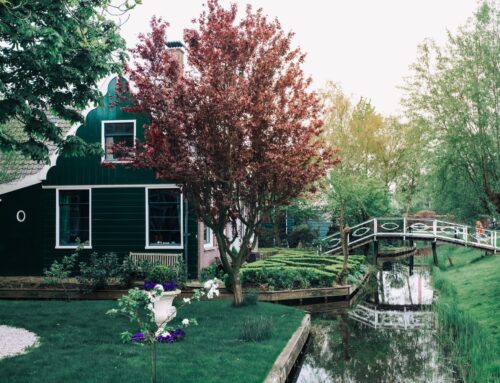Sustainable landscaping is becoming increasingly popular as more homeowners recognize the importance of creating environmentally friendly outdoor spaces. By incorporating sustainable practices into your landscape design, you can reduce water usage, promote biodiversity, and minimize your impact on the environment. Whether you’re redesigning your entire yard or simply looking for ways to make your existing landscape more eco-friendly, sustainable landscaping offers numerous benefits.
In this blog, we’ll explore the principles of sustainable landscaping and how you can create an eco-friendly yard that’s both beautiful and functional.
What is Sustainable Landscaping?
Sustainable landscaping is a method of designing and maintaining outdoor spaces in a way that conserves natural resources and minimizes environmental impact. It involves using eco-friendly practices such as water conservation, planting native species, and reducing chemical use. The goal is to create a landscape that thrives with minimal input from human intervention and supports local ecosystems.
The Benefits of Sustainable Landscaping
There are several benefits to adopting sustainable landscaping practices, both for your property and the environment.
Water Conservation
One of the primary goals of sustainable landscaping is to reduce water usage. By selecting drought-tolerant plants, installing efficient irrigation systems, and using rainwater harvesting techniques, you can significantly reduce the amount of water needed to maintain your landscape. This not only helps conserve a valuable resource but also lowers your water bills.
Supporting Local Ecosystems
Sustainable landscaping promotes the use of native plants, which are better adapted to the local climate and require less water and maintenance. Native plants also provide habitat and food for local wildlife, such as birds, bees, and butterflies, helping to support biodiversity.
Reducing Chemical Use
Traditional landscaping often relies on chemical fertilizers, pesticides, and herbicides, which can harm the environment and pollute water sources. Sustainable landscaping focuses on natural alternatives, such as compost and organic fertilizers, to nourish plants and control pests without the need for harmful chemicals.
Key Principles of Sustainable Landscaping
To create a sustainable landscape, it’s important to follow certain principles that promote resource conservation and environmental health.
Water-Wise Landscaping (Xeriscaping)
Xeriscaping is a landscaping technique that emphasizes water conservation by using drought-tolerant plants and efficient irrigation methods. By incorporating xeriscaping principles into your landscape design, you can create a beautiful and water-efficient yard that thrives even in dry conditions.
- Drought-Tolerant Plants: Choose plants that are adapted to your region’s climate and require little water to thrive. These plants can survive on natural rainfall, reducing the need for supplemental irrigation.
- Efficient Irrigation: Install drip irrigation systems or soaker hoses to deliver water directly to the roots of plants, minimizing water waste. You can also consider using rain barrels to collect and store rainwater for later use.
Planting Native Species
Native plants are those that occur naturally in a particular region and are adapted to the local climate and soil conditions. They require less water, fertilizer, and maintenance compared to non-native species. Additionally, native plants provide essential habitat and food sources for local wildlife.
- Low-Maintenance Landscaping: Native plants are often more resistant to pests and diseases, reducing the need for chemical treatments. They also require less pruning and fertilization, making them a low-maintenance option for homeowners.
- Wildlife Habitat: Planting native species helps support local ecosystems by providing habitat for birds, insects, and other wildlife. This promotes biodiversity and creates a more balanced and healthy environment.
Composting and Mulching
Composting is an effective way to recycle organic waste, such as food scraps and yard trimmings, into nutrient-rich compost that can be used to fertilize your plants. Compost improves soil structure, enhances water retention, and provides essential nutrients to your plants.
Mulching is another important sustainable landscaping practice. By adding a layer of mulch around your plants, you can help retain soil moisture, reduce weed growth, and prevent soil erosion. Organic mulch, such as wood chips or shredded leaves, also decomposes over time, adding valuable nutrients to the soil.
Reducing Lawn Size
Lawns are one of the most resource-intensive elements of traditional landscaping, requiring frequent watering, mowing, and fertilization. Reducing the size of your lawn and replacing it with drought-tolerant plants, ground covers, or hardscaping can significantly reduce your water usage and maintenance efforts.
- Alternative Ground Covers: Instead of grass, consider using low-maintenance ground covers such as clover, creeping thyme, or ornamental grasses. These plants require less water and are more resilient to drought conditions.
Hardscaping: Incorporating hardscaping features such as gravel paths, patios, or rock gardens can reduce the need for water and create a visually interesting landscape.





